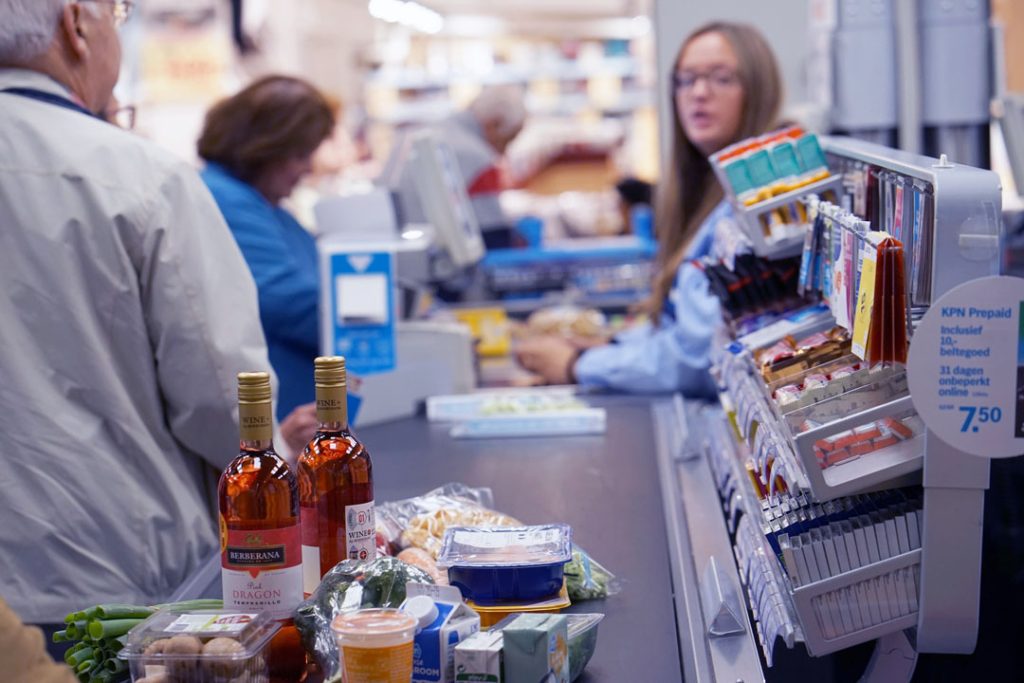From scan-and-go to queue-and-chat, generational divides are testing how far automation should go in grocery retail, writes Emma Thompson
For years, the checkout was the last human moment in a store. Now, it’s becoming the first thing to disappear. As grocers explore AI to make transactions smoother, faster, and more cost-efficient, one question keeps popping up:
Are ALL shoppers ready for this?
The answer, predictably, depends on age, attitude, and how comfortable people feel when the human element is stripped away. While many brand teams are doubling down on AI to create frictionless experiences, the reality on the ground, particularly across supermarket aisles, may reveal some cracks.
Gen Z love it, but your parents probably don’t
Most Gen Z shoppers don’t blink at walking out without interacting with a single staff member. Self-checkouts are the norm, receipts are digital, and even store layouts are optimised for scan-and-leave at speed. Many of these shoppers don’t just tolerate automation, they expect it. Digitally savvy Gen Z place convenience high on their shopping list both on and offline.
And crucially, they rarely flinch at data sharing.
But swing by a suburban Morrisons or a Tesco superstore, and the generational divide is on full display. Self-checkouts can be seen unused while older customers queue for a human cashier. For shoppers over 55, whom didn’t grow up in digital environments, automation in FMCG can feel like a cold replacement for the personal touch. Trust is harder to earn, especially when it appears designed to cut headcount rather than enhance service.

The great trade-off: speed vs. trust
Younger shoppers are time-poor and digital-literate. They’ll happily prioritise personalisation and convenience, particularly if it means avoiding queues or awkward social moments. Gen Z and younger millennials are digital pragmatists. They don’t overthink where their data goes, especially if there’s a value exchange. Loyalty cards or app-based rewards feel like hygiene factors, not invasions of privacy.
By contrast, older audiences still view the in-store experience through a service lens. Being guided, greeted or helped is part of what makes them return. When a store leans too heavily into automation, removing human elements entirely from the checkout or assuming every customer will follow digital prompts, it can feel exclusionary.
It’s not about resistance to change. It’s about whether the change respects how people actually want to shop.
Why automation feels different in grocery retailers
Unlike fashion or tech, retail and grocery is a repertoire driven shopper mission that occurs more frequently than high street store visit. Even if in browsing mode when shopping, consumers start with a necessity checklist:
Bread. Tick.
Milk. Tick.
Biscuits, because your husband ate the last one and left the wrapper in the tin… tick.
That doesn’t mean the shopper mindset is passive. Automation in the checkout flow might promise efficiencies, but not every shopper sees speed as value, especially when handling large or complex baskets.
Amazon Fresh stores showcase what’s possible when AI is allowed to lead in self-service check-outs: walk in, walk out, job done. And we expect it from Amazon, the pioneer of click to brick. But it’s telling that these stores remain concentrated in city centres, appealing to a younger, digital-savvy crowd who after all value convenience above all. They’re not representative of the entire audience. And for ‘traditional’ grocery retailers, where multiple formats dominate and where shopper base is so diverse, it raises a strategic tension: how do you innovate without alienating?

The risk of misreading intent
When Tesco trialled AI-driven recommendations that posed to nudged shoppers towards healthier diets based on their Clubcard habits, it drew mixed reactions.
Some saw it as helpful; others felt it was veering into preachy territory. It shows how quickly AI can be perceived as anywhere from supportive to intrusive.
If shoppers feel the technology is being used to force a change to their consumer choices, not just make their life easier, trust can soon evaporate. Examples of the shoppers seeing this as an overreach was seen on Reddit which irrupted with comments on a thread. One wrote:
“Dear customer, we see that this is the fourth Chicago Town Takeaway cheesy stuffed crust pizza you’ve bought this week, and cookies too. Really? Warm regards, Tesco.”
Another put expectation on the grocer’s responsibility to drive healthier choices: “I’ll believe their good intentions when they make healthy food more affordable than junk food.”
The proposed AI use on Club Card data could make some shoppers second guess using the loyalty app or the self-serve check-out in a bid to keep their annuity.
Anyway, I digress, back to self-service checkouts.
Grocers should avoid assuming that digital solutions automatically improve customer experience. AI shouldn’t be solving problems people don’t think they have. If the tech becomes invisible, seamless, and optional, that’s the ‘sweet’ spot.
Like when Alexa suggests it’s time to add the bulk buy of toilet roll to your amazon basket, or when my fridge app tells me I’m low on milk. But many shoppers don’t want to be food shamed into purchasing less pizzas and more bread sticks.
The moment it becomes confusing, or an overreach of data use, people disengage. For grocery retailers, this is especially risky. The loyalty built through convenient location, product listings and pricing could quickly be undermined if the path to purchase feels alien or awkward.
Know your shopper – or risk losing them
The Goldilocks zone lies in acknowledging difference, not chasing uniformity. Gen Z might be happy to walk into a high-street store, scan their phone and leave without eye contact. But older shoppers still tend to associate good service with human interaction. They want clarity, they want choice, and they want to feel respected.

FMCG brands who approach innovation with nuance, offering existing solutions alongside more advance ones, such as hybrid checkout options, clear signage, and opt-in data features are more likely to retain trust across all cohorts.
It’s not about resisting on automation and AI. It’s about applying it where it complements the shopper’s mission and mindset.
A future built for everyone, not just the fast lane
The pace of technological change isn’t the problem; it’s the assumption that every shopper is ready to keep up.
FMCGs don’t need to slow down their innovation roadmaps, but they do need to think more carefully about who they’re designing for. Gen Z might be fine with AI-led automation today, but loyalty is still fragile, and easy to lose if they feel pushed or misunderstood.
Groceries is a human business at its core. Automation and AI use needs to support that, it needs to feel like a choice, not a shortcut that leaves half your audience behind.
Emma Thompson is the Head of Agency at Golley Slater






